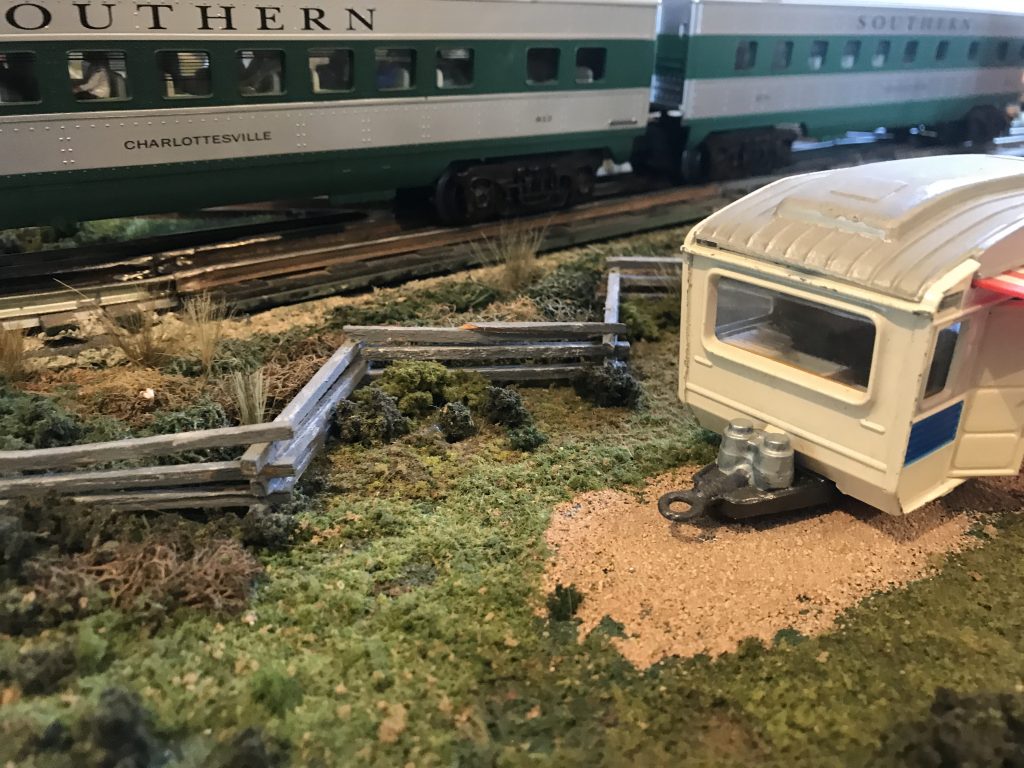
A swimming pool is not something you see on every layout. Lighted from below, it attracts your attention immediately, and it is so unique that I gave it a central location on my layout. The people you see in the water are 1:48 scale white metal figures by Arttista. The people standing around the pool are1:43 scale by Preiser. But you really don’t have to build a large community pool to use this technique. This method can be used for a backyard pool, a fountain or any small body of clean water.
Time and Difficulty
This swimming pool is easy to make, but will probably take a couple of days to construct.
What You’ll Need
- foam core board
- hot melt glue
- a sheet of blue translucent acrylic, slightly textured
- a small white LED or light bulb
- heavy card stock
- poolside figures
- poolside graphics
Build a Box
For the pool structure, cut a rectangular pool deck to the dimensions of your overall pool area (pool opening and surrounding pavement) from foam core board., My deck is 6″ x 9″. Cut an opening in the pool deck the size of your pool. My pool is 4″ x 6″ (a scale 16′ x 24′). Cover the entire opening of the pool deck with the blue plastic sheet. Cut four pool walls, and construct an open box that will fit within the dimensions of the pool deck opening. In the center of the back wall, make a small hole for the bulb. Place the pool deck on the layout board and mark the dimensions. Cut a hole in your layout board slightly larger than your box dimensions and glue the box inside. Alternately, you can glue the box underneath your pool deck and fit it inside the hole., with accurate measuring and cutting, you can glue the foam core box flush inside the pool deck opening. Hot glue holds well and you only have to tack it; the foam core is not very heavy. You don’t have to worry about small gaps, you can cover the foam core deck with an optional heavy card stock “deck pavement”.
Pave the Pool Area
Cut heavy card stock to make the pavement around your pool. Cut an inner opening the size of your pool. I would make a the outer dimension a minimum of four feet (one inch scale) for a home walkway or up to six feet (3/4″ scale) for a commercial/public pool. Twelve feet (3″ scale) makes a good-sized area for sunning. For finishing details, you can add figures, a cooler, beach towel graphics, a fence, and wooden decking. Then pour yourself a Piña Colada and enjoy your new pool.


